Introduction
I took the sailing trip of a lifetime, on par with a hike up Mount Kilimanjaro. From Key Largo to the Exuma islands about 240 nautical miles (nmi), at average 5 knots (kn) per hour, estimated to take 48 hours including overnight passages. The forecast was for mostly headwinds on the way to The Exumas so we planned to motor most of the way. We visited 6 of the 360+ Bahamian islands, anchored four nights, moored five nights, and manned the helm (overnight passages) for two nights. Returning sail was a bit faster with favorable winds sailing for 33 out of the 39 hours. No undesirable experiences occurred. Highlights included Normans Cay (snorkeling a sunken plane), Compass Cay (swim with the sharks), Shroud Cay (dingy ride across creeks to the Atlantic), and Staniel Cay (snorkel Thunderbolt Grotta caves, swim with pigs, rum punch at yacht club, and exercise hikes on land).

Voyage Details
I accepted a once in a lifetime opportunity to sail from Key Largo, Florida to the Bahamas and back in April of 2024. This was on my bucket list for two reasons: to cross the notorious Gulf Stream where most passengers turn green and to sail the beautiful Exuma islands.
Fortunately for me the timing worked out as I am recently semi-retired and able to adjust my work schedule. However, I needed to return prior to my 37th wedding anniversary, so I could only agree to a 13-day excursion.
The captain/owner of Dorothy’s Gail, a 2006 44’ Catalina Morgan sailboat, was half-way through his “Great Loop” sailboat trip, starting from Holland, Michigan in October 2023, and traveled down the Mississippi River, and was currently located in Key Largo, Florida. Captain Kim has been an ASA sailing instructor for 20+ years. I met him in 2009 when I began chartering his 35’+ sailboats out of Holland.
He needed an adventurous crew to cross the Gulf Stream and sail the Exuma islands. He had a good idea of several locations to visit that offered some neat experiences.
To start, I needed to get to Key Largo where there is no public airport. I flew to Key West and scheduled a 2.5-hour ride on a Greyhound bus to Key Largo. Fortunately, while I was waiting for the bus to pick me up at the Greyhound station outside of the Key West airport, a random person pulled up and asked if I was “waiting for the 12:30 pm bus?”, which I said “yes”. He said, “Well, many people make that mistake and the 12:30 pick-up is in the town of Key West, not the airport.” So, I walked back to the airport and took a Taxi to town, several miles away. I caught my bus ride in time and made it to Key Largo and as more good luck would have it, the bus dropped me off across the street from the Marina!
So far, so good. I met up with Captain Kim, the owner, and we went through the safety review of his boat and the amenities. The boat has numerous creature features including a complete cockpit enclosure, two lazy-boys, two refrigerators and a separate freezer, 1200 watts of solar power and 600 ah of lithium batteries with the ability to run the toaster, microwave, vacuum, TV, laundry machine, and Star Link Wi-Fi. Hardly a better way to travel than this setup.
The forecast for the following day was wind from the NW for the next two days, which meant headwinds and motor-sailing. We made our plans to depart the next day at high tide, 7 am Thursday. I knew we would motor the whole way and simply hope for some wind along the way. Ironically, the marina Captain Kim was at happened to be the same marina/hotel my wife and I had stayed at nearly 29 years prior, and a very pleasant memory indeed. The total distance to Exuma Cays from Key Largo is 240 nmi. With an average speed of 5 kn, we needed to plan for 48 hours with a possibility of two overnight passages. We needed to check-in to a Bahamian Port-of-Entry and chose Chubb Cay, only 135 nmi and estimated at 27 hours of motor sailing time.
Day 1 Thursday 7am. The weather forecast was sunshine and winds from the East (header winds) 15 knots ☹. Waves expected to be 1-3 feet ☹. We exited the marina at high tide and over the marina’s shallow shoal egress just fine and motored out into the Florida shoals as mapped by RayMarine/ Navionics routing tool. We had our depth programmed in Navionics at 6’ while our true depth was 4’11”. It was scary for me as I have never seen Navionics auto routing before, and it routed us on a path near coral heads marked with a red X on the chart plotter ☹. There were a lot of red Xs . While the route lines went between and near the markings of a red X, it never routed us directly over top of a red X. The shoals were shallow, mostly between 6 and 20′, and we could see the beautiful blue and green waters along with occasional dark shaped areas. Some of the dark shapes were rocks, sharks, stingrays, or coral heads, and other times they were simply clouds passing over, casting a shadow onto the waters. It was tough never knowing if we would hit bottom until our boat went past the dark spots that dotted the water. Onward we went along the shoreline in the mapped route area towards Miami curving the bottom of the Florida topography, all in water between 6 and 20’ shallow. After an hour or two, the route went out towards the deep ocean due East. We used PredictWind and Windy apps to see if any angle towards the Bahamas would offer a favorable sailing route vs a motor route. None existed, so we proceeded with the motor on and headed for the Mackey Shoals of Bahamas as routed on the Navionics chart plotter. Eventually, the route cut through the Bahamian shoals ranging from 4-20’ depths and many more red X markings on the electronic chart plotter. We must have crossed the feared Gulf Stream but never really knew when and if we were in it. The Gulf Stream can be very uncomfortable for a 10-30-mile-wide pathway of water where the current runs south to north at 2-3 kn and the wind and waves can come from different directions leading to confused waters, making boats pitch and yawl and a high percentage of people turning green. Our boat speed with motor was a slow 4.5 kn, instead of the planned 5-6 kn.
We knew how to sail so we thought we just needed to get there. Most of our research was on which islands to see and what fun we could expect when we got there. I should have researched the Gulf Stream a bit more on how never to fight the current, and always go directly east or west or slightly north to use the current to our benefit. Also, learning how to navigate the Bahamian shallow shoals safely. I reached out to my son Mitch and my nephew Nick, both professional yacht captains with years of experience in the Bahamas, many times throughout the 13 days. We used Navionics numerous times to auto-route a path to our various destinations. That was very helpful, except it would often cut through a shoal and go near red X markings. We approached the Bahama shallow waters known as Mackey Shoals at midnight. ☹Our route through the shallow Mackey Shoals is south of Bimini Island and requires 20-30 miles over shallow waters and near numerous red X markings and other dangerous items listed on the charts. ☹ Suspense was building. ☹ Mitch and Nick each independently confirmed it is “OK to cross Bahamian shoals wherever Navionics has a magenta line” . This must mean a common path used by many Navionics users.
Day 2. It was midnight and the winds were still 15 knots on the nose with waves at 1-2 feet. As we neared the start of the Mackey shoals, I got out the million candle LED flashlight and shined it on the waters. No luck, just a view of dark wavy water and not able to see our safe passage. ☹ Oh well, here we go and off we went through the shoals for the next 6+ hours. It was early daylight when we finally saw the Northwest Channel marker indicating the end of the shoals. This meant we were to begin safer sailing in the deep water named “Tongue of the Ocean” . Our first stop was the Chubb Cay Port-of-Entry. Incidentally, when in very deep waters, the depth finders show “—” instead of feet. We arrived around 3 pm and hailed the marina on the marine radio and asked for fuel. We had just run the motor for 33 hours in a headwind and expected a burn rate of 1.5 gallons of diesel per hour. It turned out that we topped off with using 30.5 gallons of diesel, less than expected, a pleasant surprise for the owner. While we were refueling, the marina crew offered to run the captain in a golf cart to the customs office a few miles away for our final check-in steps. We were very happy with the marina staff and their assistance. Dorothy’s Gale holds 100 gallons of fuel. Sailboats are well known for having inaccurate fuel gages as compared to a car. So, it is best to know a secondary method of managing fuel consumption. One hundred gallons of fuel should give us 100 hours of run time, so the captain should always write the engine hours down when refueling the boat. Nassau is ~40 miles away and, estimating 5 knots per hour, is 8 hours of sail/motoring. Since it was 3:30 pm, we headed to a nearby anchorage near Chubb Cay Marina. We only had two sailboats in the anchorage when we passed by to get fuel, and at 3:30pm, there were 5 boats anchored, making it a bit harder to find an anchoring spot. We set anchor, cooked dinner, and enjoyed the first cocktails while on the journey. The water is a beautiful set of blue-on-blue shades .

Day 3. The weather was 15 kn and coming directly from Nassau, where we wanted to go. Again, we motored much of the way on our estimated 30 nmi journey and requiring about 6 hours. I reached out to Nick and Mitch on where to anchor near Nassau and they said the West side is easier for our expected winds. Both Mitch and Nick warned us NOT to head to The Exumas from the north side of Nassau over the Yellow Back shoals. There are too many coral heads to avoid. On Navionics, the Yellow Back shoals looked like a red X minefield.
Additional good fortune while we were under sail, Captain Kim cast a fishing line out 200’ with a floating squid lure and caught a Yellow Fin tuna. I slowed the boat as best possible and scrambled to gather up plyers, knives, a bowl for meat, a gaff hook and a net on an unfamiliar boat. Captain Kim calmly told me where to look all while he worked to keep the fish on the hook. That was an awesome experience to catch and ‘land’ a fish. We fileted the tuna in the hard bottom dinghy, and we knew what we were having for dinner . We entered Nassau West Bay, a bit more dangerous with a curvy entrance path into the anchorage, and we needed to avoid more red X markings on the chart plotter.
Day 4. The weather was 15 kn and coming from the Normans Cay direction 49 nmi away, about 10 hours of travel time, and we wanted to anchor in daylight. As we were departing from West Bay of Nassau, we had lost our anchor snubber shackle, as it was not on the bridal nor the chain. As if a scuba diver unscrewed the shackle from the bridal and chain ☹.
We motor-sailed for 10 hours on the ‘Magenta line” all the way to Normans Cay. As we began to navigate towards our planned anchorage, I reached out to Nick a few times about exactly where to anchor and the line to follow to get there. He would send me screenshots and lines drawn and an X on where to anchor. Our charts showed a depth of 0’00” so we were not going there ☹. And we simply anchored out about a ½ mile from shore. Problem solved . We took the dinghy onto shore and walked to the airport runway, and this was our first stop on the Exuma island of Normans Cay.

Day 5. Wind and waves from the East at 15 knots, again. We motored the sailboat into the channel near the sunken airplane so we could go snorkeling and see it under water. Well, we dinghied over to the plane, being down current, and as we threw the dinghy anchor into the water, we noticed it was not holding ☹. Oh well, I dove in and started to swim to the anchor and noticed I had trouble swimming against the current. The tidal currents were nearly 2 knots, and it was easy to get winded, and with a snorkel, kind of scary. I grabbed the anchor and pulled the boat towards the plane and found a hole on the ground floor, maybe an old home to an eel or crab, stuffed the anchor spike into it and pressed it deeper with my flipper. It did hold, but I was nervous. I began to get farther away from the dingy and closer to the plane. Kim had a GoPro and was cruising in and over the plane. I could only leave the dingy for a few moments at a time. If it broke free, then the next stop for the dinghy could have been Bermuda!!! Well, we did snorkel the awesome sunken airplane and got some great photos.

After snorkeling, we sailed about 10 nmi to Compass Cay with favorable winds, and this is where Navionics had an issue. I have a tablet with Navionics and the sailboat has a chart plotter with Navionics. Each showed a different route to get into Compass Cay Marina. We wanted to see a widely known place where you can see sharks and possibly swim with them. First, we tried the boat chart plotter and it had us routed through the south entrance, yet it was low tide and strong head winds. On our way snaking through an underwater canal and bypassing sandy shoals above water, we eventually saw our imminent blockade of a shoal fully exposed and no way around it ☹. We managed a 180-degree U-turn using the bow thruster and fighting the headwind as we changed course and went the other route using my tablet chart plotter. Again, it was a zig-zagged path, and we used a visual queue to follow the darker water winding a pathway to the marina. Dorothy’s Gale had EarTec headsets onboard which really came in handy; as I stayed on bow watch with tablet chart plotter in hand and Captain Kim at the helm with his chart plotter, we safely arrived near the marina, and Captain Kim circled an anchorage area – that was perfect – allowing space for other boats to bypass us as they would enter and exit the marina safely. That is when my tablet, EarTec headset, and Navionics earned a few points .
We then used the dingy to cross over to the marina and we paid the $15/person to tie our dingy up to their dock and $20 to dispose of our one bag of trash. We proceeded to wade in the water with the sharks. They came towards us out of curiosity and to see if we were the food or bringing them food. It was cool and their skin was rubbery and grippy. When we were done visiting with the sharks, it was 3:10 pm and the marina stopped serving burgers at 3 pm. Hmmm. At $15 per person to be on the dock and $25 for a burger, and possibly a beverage, it may have cost upwards of $75 a person for a lunch burger. So back to the boat to have more “Paradise on a Budget” and easy dinner .
Day 6. Winds were forecasted to be 10-15 knots and favorable for a nice sail to Shrouds Cay. We saw mooring balls and a paybox onshore. It also had beautiful water and a white sand beach. We took the dingy to the shore and noticed the paybox with no paper forms and no ink pens, so we thought it should be a free mooring ball . We decided to dingy up the creek which runs from the inland straits side to the Atlantic side and is about 1.5 nmi long. However, it was low tide and too shallow, so we put that excursion on hold for a few hours and waited for higher tide. When we went back out for the dinghy creek ride, we saw many sea turtles and one shark in the creek. We made it to the famous washing machine where the tourists, me included swim in the current where a large eddy looks like a swirling washing machine .

Day 7. Winds were predicted to be 10-15 knots and in a favorable direction to sail to Staniel Cay . Looking at the forecast, days 3 and 4 ahead were to have high winds of 20-30 knots and making me more nervous to be on the hook (anchor) versus a mooring ball. We emailed the marina at Staniel Cay Yacht Club and got an autoreply. They did not respond after many hours, so I called them using my Wi-Fi cell phone via StarLink. They noted that no marina slips were available, and we could not afford them anyway, yet they have 20 mooring balls, first come first serve at $44.80 per day. We had a great sail and arrived in the afternoon, hailed the marina on channel 16 to ask for permission to get fuel, which we refueled both the dingy and the sailboat. Then we grabbed a mooring ball and headed by dingy into the office to pay up for both fuel and mooring ball for 4 nights .

Day 8. At low tide, we snorkeled the Thunderbolt Grottos; it has many caves and egresses out of the grotto caves, some into deep water with others into shallow waters. Above the grotto caves is a big dome where some brave kids jumped 20’ into the grotto waters .
Day 9. We hiked on land and found all 3 grocery stores, each about the size of an American garage, and each with their own specialties. We watched the fishermen feed the marina sharks, a little people-watching, and sampled rum punch .
Day 10. We hiked to Pirate Beach and around the perimeter of the island. More fishermen shark watching and rum punch .
Day 11. The winds were predicted to be high, 20-25 knots, but favorable to return to Florida. At 8 am, we left the safety of the mooring ball. The first leg back was for 50 nmi, 10 hours, through the shoals to the West side of Nassau, where we hit top boat speed ever of 10.1 knots . Past Nassau, we entered an ocean channel exposed to the Atlantic with swells of 6’ or more and 25+ knot winds pushing us up to the Northwest channel for 6 hours, then through the Mackey shoals again from midnight to 8 am into Day 12.
Day 12. The waves calmed down in the Mackey shoals , and it was hard to find a comfortable downwind direction as we had to follow the “magenta line” on Navionics. Sailboats can sail directly downwind, but you need to pay attention to avoid jibing the main, having it swing from one side of the boat to the opposite side with force and a bang. So, we mostly used only the front Genoa head sail. It also would snap with a bang as the waves would rock the boat forward and backward and the sail would fill and then sag. Around 8 am, we made it to the deep ocean. We chose to head north a bit towards Palm Beach. Nick advised us to arrive at high tide to hit slack tide and avoid the 3.5 knot current . Our boat can only motor at 5.5 knots so that is a battle to fight the tidal currents at the wrong time. That meant we needed to make our entrance to the channel near 11pm.
We entered the channel at 10:30 pm and went into our slip at 11 pm. Just as we reached the dock, the rain started and then it poured sideways, yet we had to dock and tie up in the dark rain.
After a good night’s sleep, I departed at 10 am by Lyft for Palm Beach airport.
What a great trip!
Thanks to Captain Kim and Dorothy’s Gale.

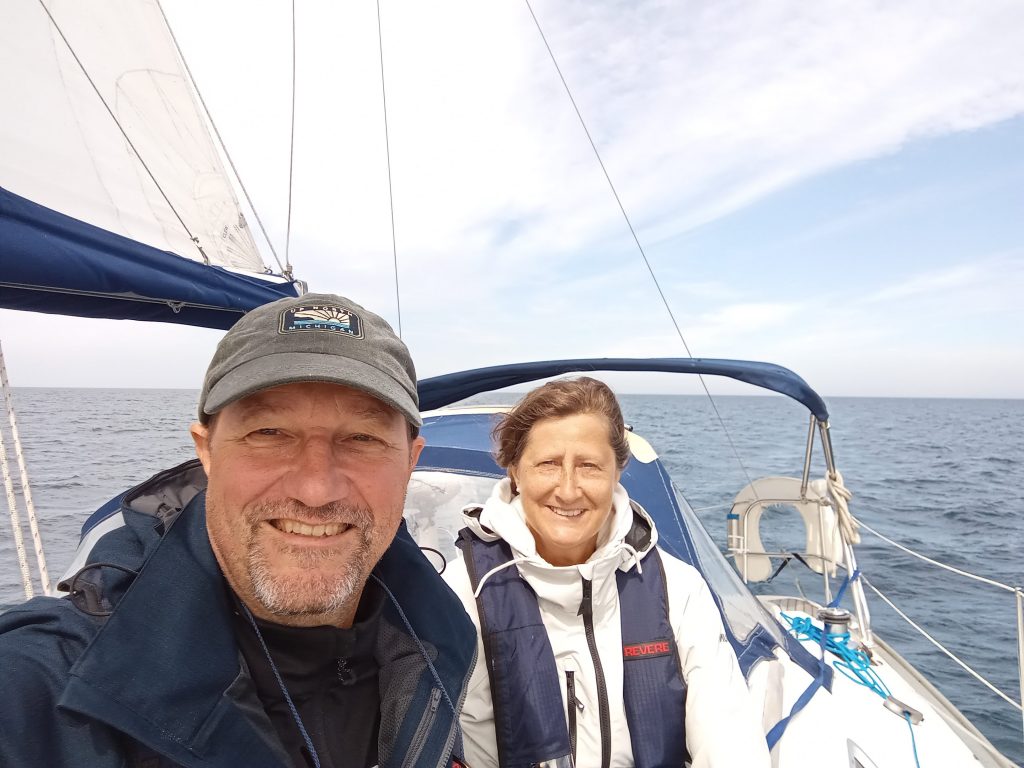
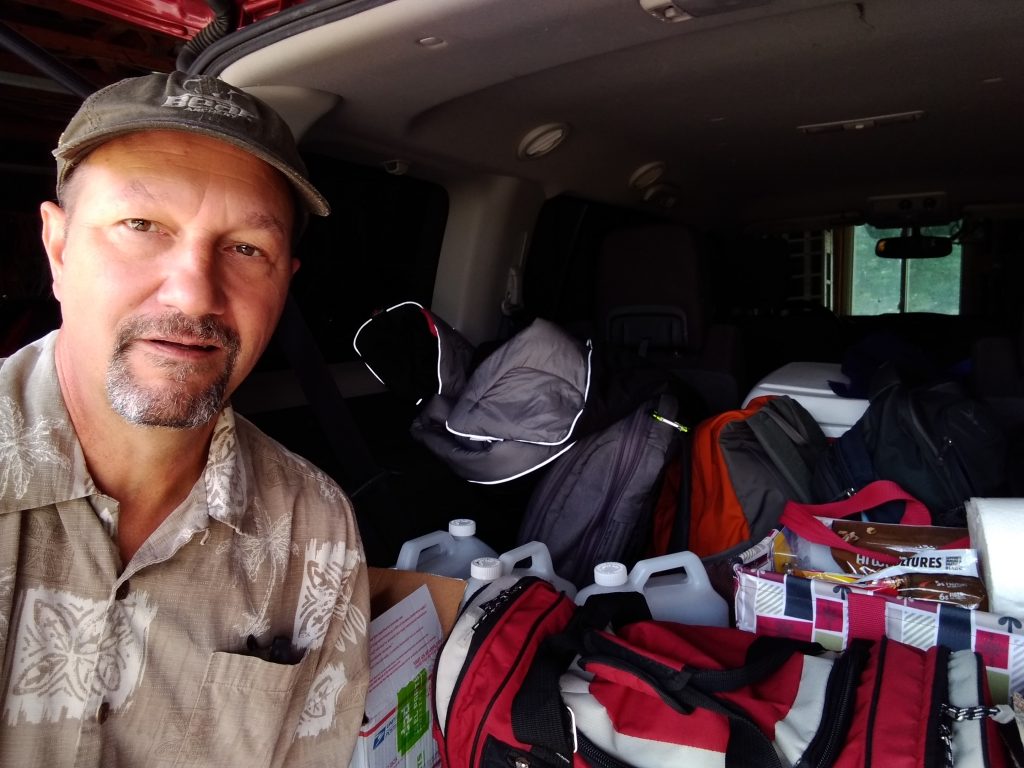

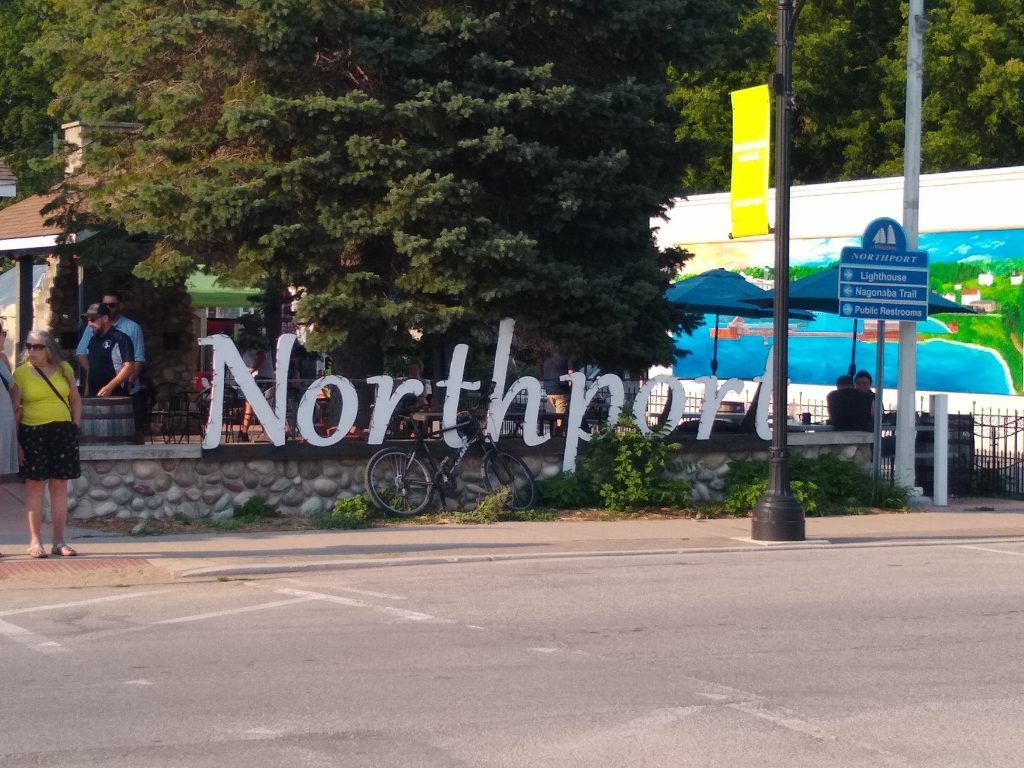

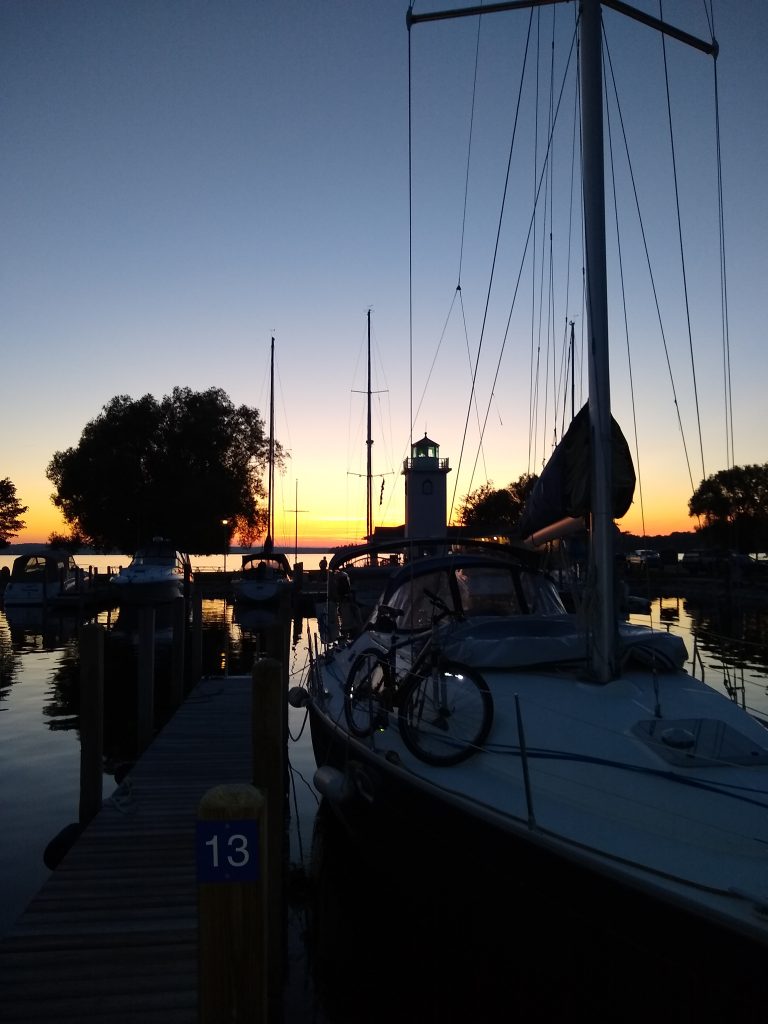


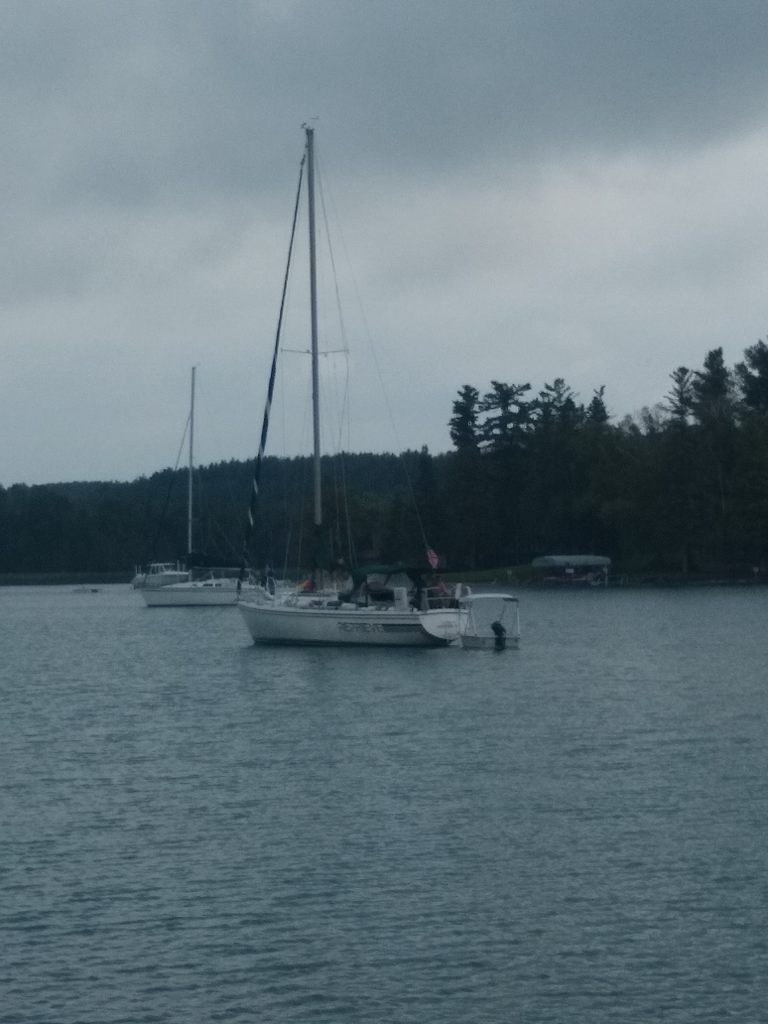

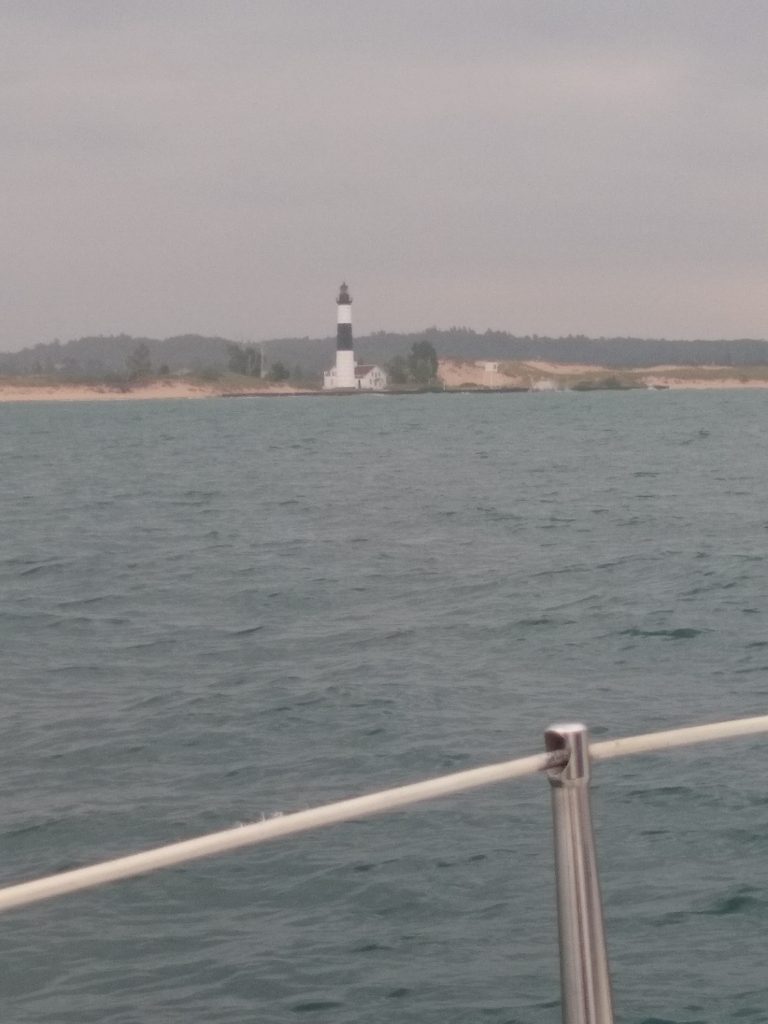
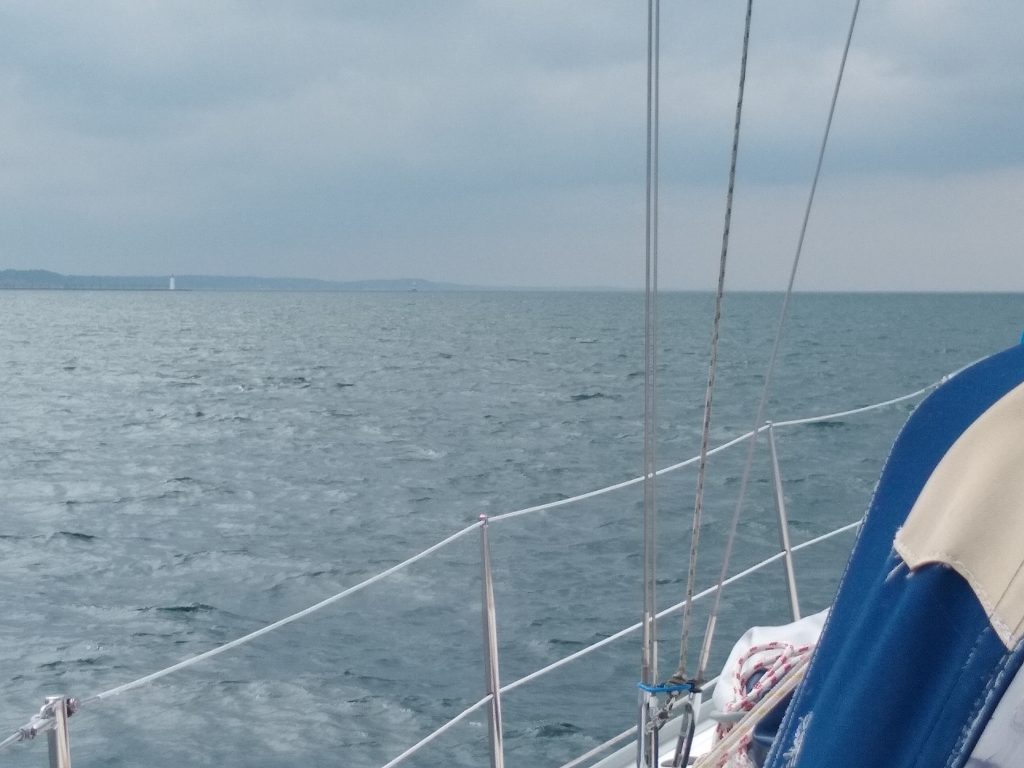
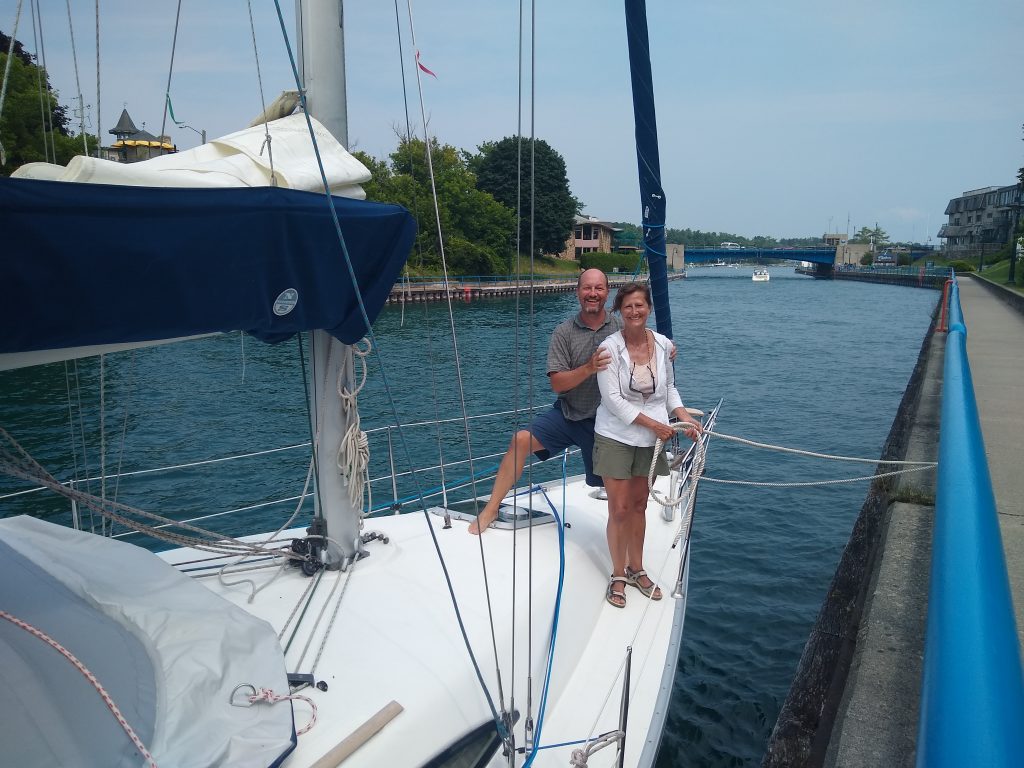
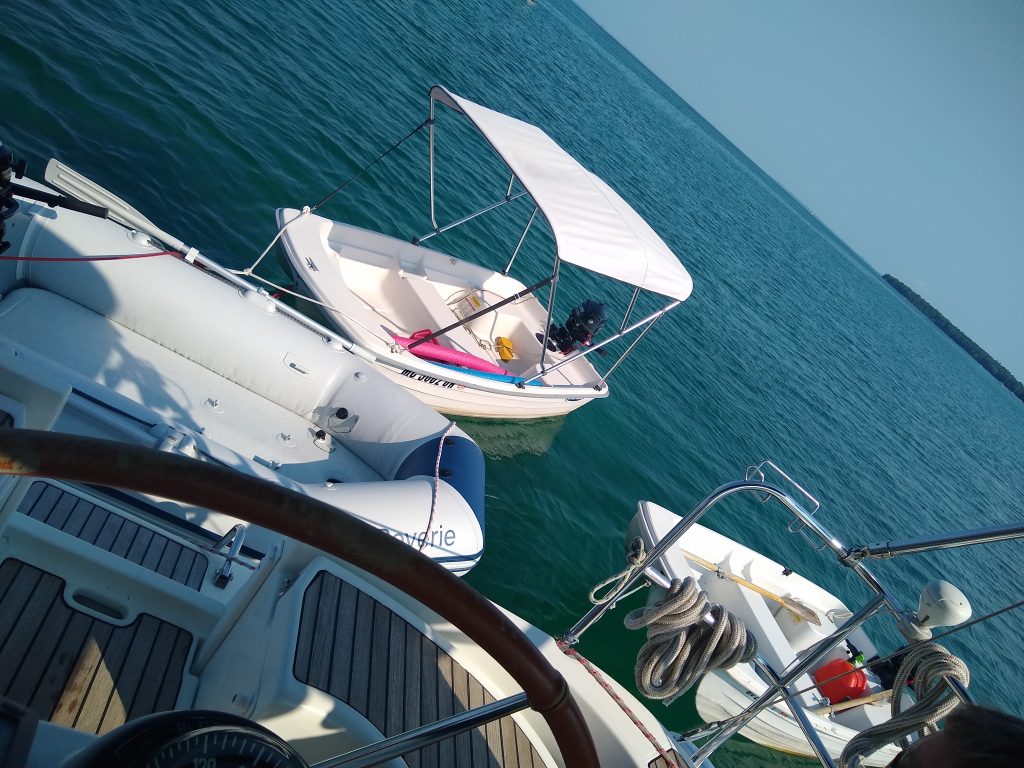



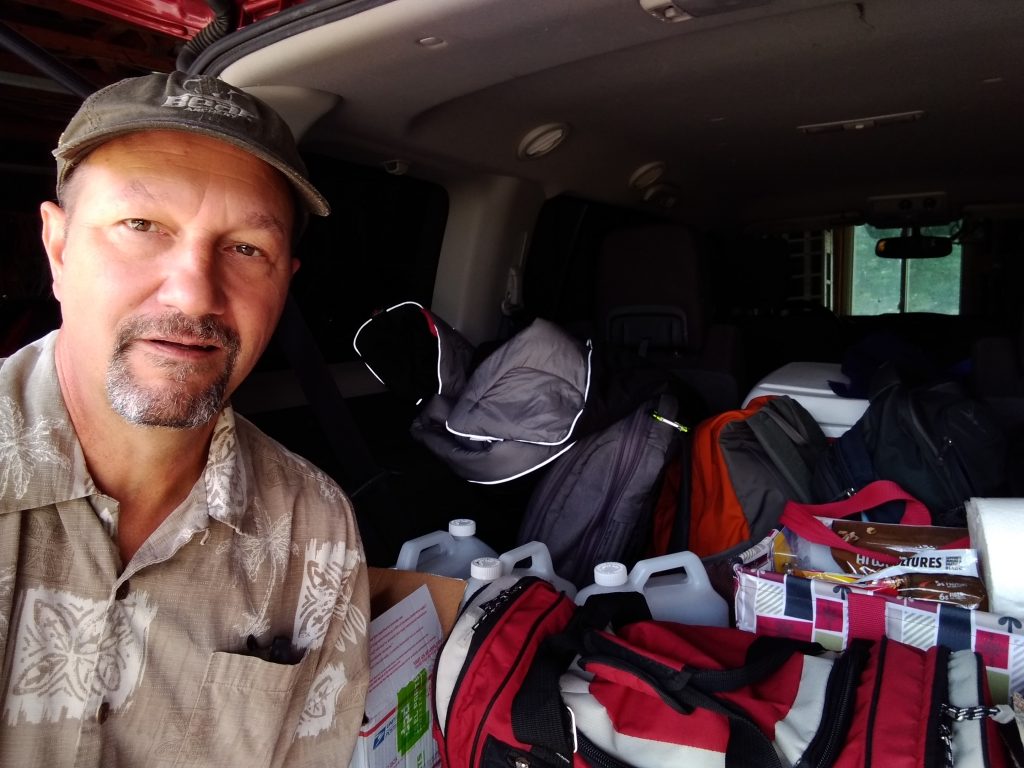

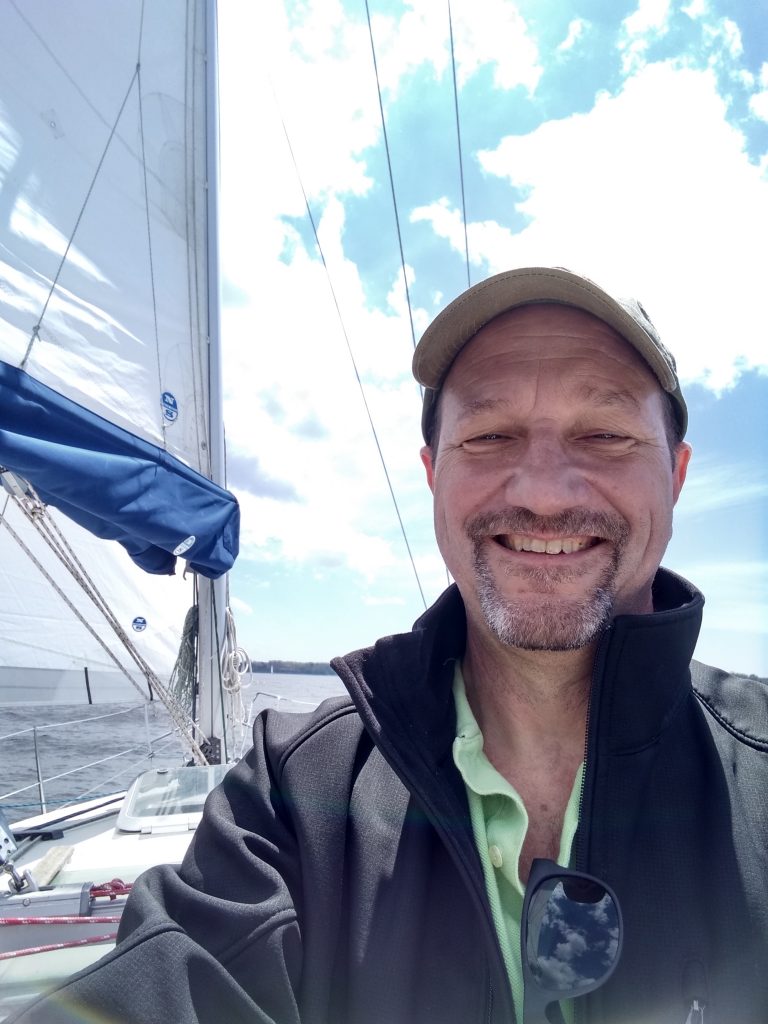
 Cons: No battery charger for my kindle.
Cons: No battery charger for my kindle.